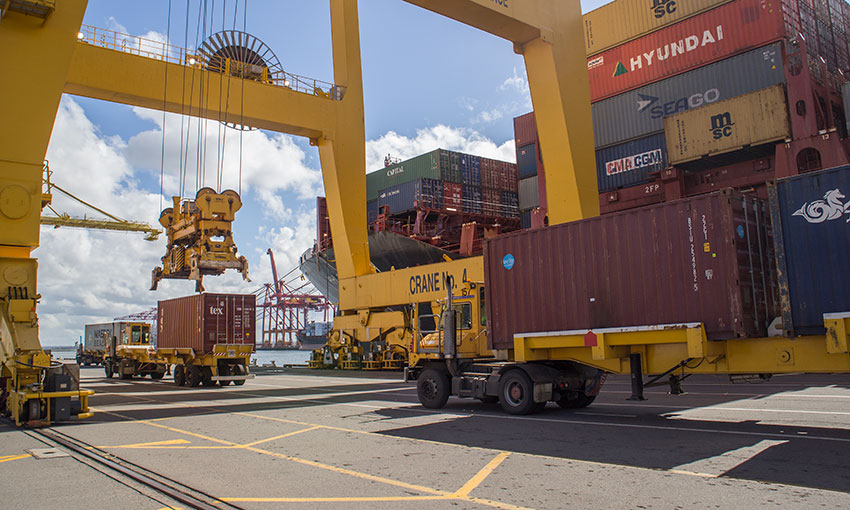DRAMATIC new evidence from the UN Conference on Trade and Development shows just how much the demand for goods has soared because of COVID-19.
And, crucially, despite what you may have read in various places over the last few days, it provides evidence that the goods supply chain (read: container shipping) is highly resilient.
What is supply chain resilience?
“Supply chain resilience has been defined as the supply chain’s ability to be prepared for unexpected risk events, responding and recovering quickly to potential disruptions to return to its original situation or grow by moving to a new, more desirable state in order to increase customer service, market share and financial performance.”
Hohenstein et al in Research on the phenomenon of supply chain resilience: a systematic review and paths for further investigation
So the key points of supply chain resilience are:
- Ability to be prepared for unexpected risk events
- Responding to/recovering from potential disruptions
- Returning to its original situation or growing by moving to a more desirable state
COVID-induced disruption
As we all know, there has been huge economic disruption induced by lockdowns to protect against the virus. One of the side effects has been a dramatic rise in e-commerce around the world which has increased global online retail sales’ share of total retail sales from 16% to 19% in 2020.
“Demand for containerized trade is up on several routes, partly in response to increased purchases by households of consumer goods during confinement measures, with many such goods made in Asia,” UNCTAD notes in its bulletin, Impact of the COVID-19 pandemic on trade and development.
In Australia, that rise in e-commerce has been profound, as can be seen from the table below. The online share of retail sales has jumped from 5.6 percentage points in 2018 to 9.4 percentage points in 2020. The value of retail sales jumped from US$13.5 billion in 2018 to US$22.9 billion in 2020. That’s a 69.6% increase.

Despite all the difficulties experienced around the world, it is remarkable, and, indeed a testament to the resilience of the containerised supply chain and container shipping, that the whole logistics system for the supply of goods hasn’t buckled under the increased pressure.
But, wait… there’s more!
Global container shipping is returning to its original state and is becoming stronger!
While it is clear that the pandemic caused a fall in the volume of global port calls, UNCTAD largely attributed this to declines in the movements of ferries, cruise ships and ro-ro. However, global container shipping has – despite everything – sailed through the COVID storm and has done its fundamental job: it has delivered the goods.
And, even better, there is evidence that global container shipping is growing back stronger.
“Container ship port calls have recovered and are in many regions back to their pre-pandemic numbers, if not higher,” UNCTAD said in its bulletin.
There is plenty of evidence that the global container fleet is expanding in response to demand. Global shipping line Hapag-Lloyd has placed a huge container order and CMA CGM has placed a giant order for 22 box ships. And that’s just some of the major developments in the world fleet.
For instance, according to international consultancy Dynaliners, there were at least six vessels of 4000 TEU and above (including one 23,000 TEU-plus monster) and 12 ships of sub-4000 TEU delivered into the global fleet in March this year. In March-April, there were at least nine box ships ordered for the global fleet ranging in size from 3000 TEU to 16,000 TEU. Meanwhile, in the same period, there were only three containerships sold for demolition and they ranged from 300 to 1800 TEU in size.
That’s a huge capacity expansion in the world fleet.
Australia now has more services than it did before the pandemic
There are now at least three more general cargo services than before the pandemic started. Sea Swift set up an innovative Singapore to Dampier service; ANL set up a new Singapore to Hedland route; and international shipping line Zim also launched a new service.
Applying the facts to the definition of supply chain resilience
- Was there an unexpected risk?
Yes, COVID-19. - Was the container shipping industry able to prepare for it?
Yes, despite the challenges, container shipping network delivered the goods, and in volume too! - Is the industry responding to and recovering from the disruption?
Yes, UNCTAD data proves that the global container shipping port calls have recovered. - Is the global container shipping moving to a more desirable state?
Yes, the capacity of the world shipping fleet and the world container fleet is expanding with new orders for both and few demolitions of ships. Australia now has more general cargo shipping services that it did before the pandemic started.
Every aspect of the test of supply chain resilience is satisfied.
Despite anything to the contrary you may have read by various commentators, the global maritime supply chain for goods is not vulnerable. It is resilient. And that is just a fact.

